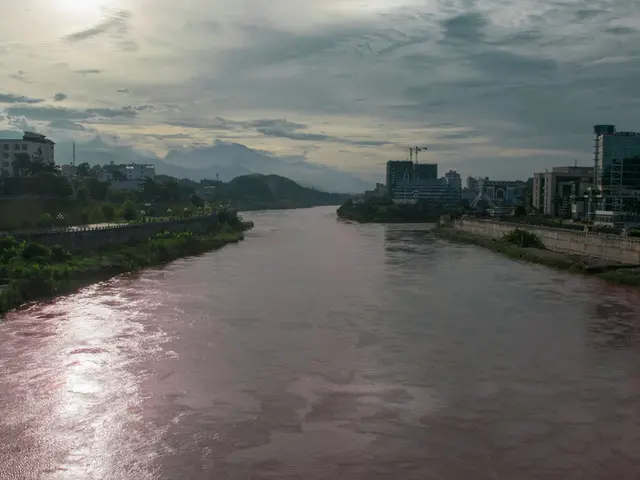Catastrophic Footage: Overflowing waters, rampant wildfires, and other calamitous natural occurrences recorded on video
Rising Tide of Natural Disasters: A Global Concern
A growing body of evidence suggests that the frequency and severity of natural disasters are on the rise, largely due to climate change. This trend has been observed in the form of more intense hurricanes, wildfires, floods, heatwaves, and droughts across the globe.
Hurricanes and Heatwaves
In recent years, we have witnessed stronger and more frequent hurricanes, such as Hurricane Helene and Milton in 2024, and Hurricane Beryl, the earliest category 5 on record. These storms are fueled by warmer ocean waters and intensify faster than in the past, posing a significant threat to coastal communities.
Wildfires and Droughts
The rise in global temperatures has also led to more severe wildfires, as seen in the record-cost wildfires near Los Angeles in early 2025. These fires are driven by unusual drought conditions, abundant dry vegetation, and strong winds, all of which are becoming more common with climate change.
Flooding Events
Heavy rainfall and flooding events have become a regular occurrence, affecting multiple continents. In 2025 alone, intense monsoon rains caused major floods in Pakistan, while heavy rains triggered floods and landslides in Colombia and Venezuela. Europe, parts of Asia, and South America have also experienced costly flood events.
Record Heatwaves and Droughts
Extreme heatwaves and droughts have become more prevalent, with the prolonged heatwave in Fennoscandia in 2025 and worsening drought in the American West being notable examples.
Implications
This increase in natural disasters has significant implications. Economic losses from these events have reached staggering levels, with global disaster costs reaching $368 billion in 2024 and $131 billion in just the first half of 2025. Many losses remain uninsured, highlighting a protection gap and community vulnerability.
The heightened frequency and severity of these disasters necessitate a heightened need for adaptation and mitigation. This includes better building codes, maintenance, flood preparedness, and improved forecasting and warning systems to reduce damage and loss of life.
Expanding Risk Areas
Climate change is also expanding the geographic distribution of hazards, meaning some regions face new risks they are less prepared for. This is particularly true for the Asia-Pacific region, where countries like the Bahamas, Haiti, and Zimbabwe are experiencing high disability-adjusted life years lost due to these events.
Social and Economic Stresses
Repeated disasters can lead to social and economic stresses, impacting infrastructure, homes, livelihoods, and health, especially in vulnerable populations.
A Call to Action
Scientific and insurance industry data clearly link climate change with increasing disaster frequency and severity, underscoring the urgent need for global action on emissions reduction and resilience building. A collective response is needed, prioritizing resilience and sustainable practices to safeguard lives and property.
In this critical time, it is essential to address the challenges posed by climate change and adapt to a new reality of intensified natural disasters. The world faces a test of resilience and cooperation, and it is our collective responsibility to rise to the challenge.
Weather forecasting plays a crucial role in preparing for natural disasters, such as hurricanes and heatwaves, as more accurate predictions can help communities take necessary precautions.
The escalating issue of climate change has drastic implications for the health of individuals, prompting a call for environmental science research to develop sustainable solutions to combat the effects of global warming.
The rise in extreme weather events, including wildfires and droughts, highlights the need for better science and technology to manage and mitigate the environmental impacts.
Climate change is not only fueling a rise in natural disasters but is also affecting the overall state of the environment, making it essential for governments and corporations to prioritize environmental stewardship and work towards combating climate change for the safety and well-being of all.








